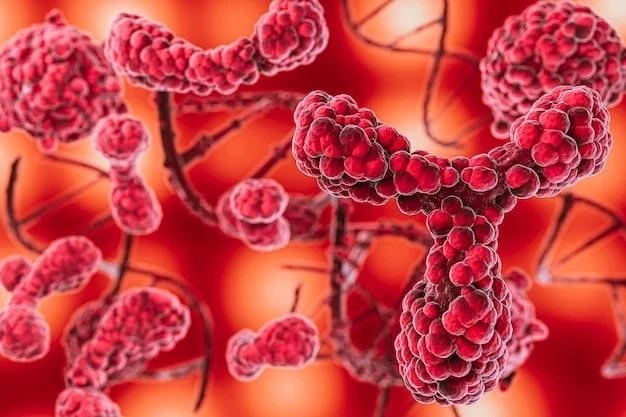Understanding Hyperlipoproteinemia Type V
Hyperlipoproteinemia Type V, also known as Dysbetalipoproteinemia, is a genetic disorder affecting lipid metabolism. This article explores its causes, symptoms, diagnosis, treatment options, impact on metabolic syndrome, liver dysfunction, and future research directions.
Introduction to Hyperlipoproteinemia Type V
Hyperlipoproteinemia Type V is a rare genetic disorder that affects lipid metabolism. It is also known as Dysbetalipoproteinemia, a condition characterized by elevated levels of chylomicrons and triglycerides in the blood. This disorder results from a deficiency in Apolipoprotein E, a protein essential for the metabolism of chylomicrons and very-low-density lipoproteins (VLDL).
People with Type V Hyperlipoproteinemia may experience symptoms like abdominal pain, recurrent pancreatitis, eruptive xanthomas (fatty deposits under the skin), and lipemia retinalis (milky appearance of the retinal vessels). If left untreated, this condition can lead to complications such as metabolic syndrome, atherosclerosis, and coronary artery disease.
Diagnosis of Hyperlipoproteinemia Type V involves blood tests to measure lipid levels, including triglycerides and cholesterol. Additionally, genetic testing can confirm mutations in the Apolipoprotein E gene. Treatment options focus on managing triglyceride levels through lifestyle modifications like a low-fat diet, regular exercise, and medications such as fibrates or statins.
Individuals with this disorder are also at a higher risk of liver dysfunction, insulin resistance, and hypothyroidism. Understanding the underlying mechanisms of Type V Hyperlipoproteinemia is crucial for developing targeted therapies that can improve lipid metabolism and reduce the risk of cardiovascular complications.
Types of Hyperlipoproteinemia
Hyperlipoproteinemia encompasses several types, each characterized by distinct lipid abnormalities. In addition to Type V, other common types include⁚
- Type I Hyperlipoproteinemia⁚ Also known as familial chylomicronemia syndrome, this condition is marked by elevated chylomicrons due to defects in lipoprotein lipase or its cofactor, resulting in pancreatitis risk.
- Type II Hyperlipoproteinemia⁚ This type is further divided into subtypes IIa and IIb, characterized by high levels of LDL cholesterol and either normal or elevated triglycerides, respectively.
- Type III Hyperlipoproteinemia⁚ Known as dysbetalipoproteinemia, this disorder involves elevated cholesterol and triglycerides, leading to xanthomas and atherosclerosis risk.
- Type IV Hyperlipoproteinemia⁚ Marked by elevated VLDL and triglyceride levels, individuals with this type are at an increased risk of pancreatitis and cardiovascular disease.
Understanding the different types of hyperlipoproteinemia is crucial for accurate diagnosis and tailored treatment strategies to manage lipid levels effectively and reduce the risk of associated complications.
Causes of Hyperlipoproteinemia Type V
Hyperlipoproteinemia Type V, or Dysbetalipoproteinemia, is primarily caused by a genetic mutation affecting the production or function of Apolipoprotein E. This essential protein plays a key role in lipid metabolism, specifically in the clearance of chylomicrons and VLDL from the bloodstream.
Individuals with Type V Hyperlipoproteinemia inherit a defective Apolipoprotein E gene, leading to impaired chylomicron and VLDL metabolism. As a result, these lipoproteins accumulate in the blood, causing hypertriglyceridemia and increasing the risk of cardiovascular complications.
Aside from genetic factors, lifestyle choices such as a diet high in saturated fats and sugars, sedentary behavior, and obesity can exacerbate lipid abnormalities in individuals predisposed to Hyperlipoproteinemia Type V. Certain medical conditions like diabetes, hypothyroidism, and kidney disease can also contribute to the development of this disorder.
Understanding the underlying genetic and lifestyle-related causes of Type V Hyperlipoproteinemia is essential for implementing effective prevention and management strategies. By addressing both genetic predisposition and modifiable risk factors, healthcare providers can help individuals with this condition reduce their risk of cardiovascular events and improve their overall health outcomes.
Symptoms and Complications
Individuals with Hyperlipoproteinemia Type V may experience a variety of symptoms and are at risk of developing serious complications. Common symptoms include abdominal pain, eruptive xanthomas (fatty deposits under the skin), lipemia retinalis (milky appearance of the retinal vessels), and recurrent pancreatitis due to elevated triglyceride levels.
Complications associated with Type V Hyperlipoproteinemia include an increased risk of metabolic syndrome, a cluster of conditions that raise the risk of heart disease, stroke, and type 2 diabetes. Additionally, the accumulation of triglycerides and chylomicrons in the blood can lead to atherosclerosis, a condition where fatty deposits build up in the arteries, potentially leading to coronary artery disease.
Unmanaged Type V Hyperlipoproteinemia can result in liver dysfunction due to the excessive accumulation of lipids in the liver cells. Insulin resistance, a condition where cells fail to respond to insulin properly, is also a common complication in individuals with this disorder, further increasing the risk of cardiovascular events.
Early recognition of symptoms and proactive management of Type V Hyperlipoproteinemia is crucial in preventing the development of severe complications. By addressing symptoms promptly and implementing lifestyle changes and appropriate medical treatments, individuals with this condition can reduce their risk of adverse cardiovascular events and improve their quality of life.
Diagnosis of Hyperlipoproteinemia Type V
Diagnosing Hyperlipoproteinemia Type V involves a combination of clinical evaluations and laboratory tests to assess lipid levels and genetic markers. Initially, healthcare providers may conduct a physical exam to look for signs like eruptive xanthomas or symptoms such as abdominal pain, which are indicative of lipid abnormalities.
Blood tests play a crucial role in confirming the diagnosis of Type V Hyperlipoproteinemia. These tests measure lipid levels, including triglycerides, cholesterol, and lipoproteins such as chylomicrons and VLDL. Elevated triglyceride levels above 1000 mg/dL are often seen in individuals with this disorder.
In addition to lipid profiles, genetic testing can further confirm the presence of mutations in the Apolipoprotein E gene, which is responsible for the impaired metabolism of chylomicrons and VLDL. Identifying these genetic abnormalities can help tailor treatment approaches and provide insights into the inheritance pattern within families.
It is essential for healthcare providers to differentiate Type V Hyperlipoproteinemia from other types of hyperlipoproteinemia through comprehensive diagnostic tests. Once a definitive diagnosis is established, healthcare teams can work with individuals to develop personalized treatment plans aimed at managing lipid levels, reducing the risk of complications, and improving overall cardiovascular health.
Treatment Options
The treatment of Hyperlipoproteinemia Type V focuses on managing lipid levels to reduce the risk of complications associated with elevated triglycerides and chylomicrons. Lifestyle modifications are often the first line of defense and include adopting a low-fat diet rich in fruits, vegetables, and whole grains.
Regular physical activity is essential for improving lipid metabolism and overall cardiovascular health. Exercise helps lower triglyceride levels and can also aid in weight management, which is crucial for individuals with Type V Hyperlipoproteinemia who are overweight or obese.
For individuals who require additional pharmacological intervention, medications such as fibrates or statins may be prescribed to help lower triglyceride levels and reduce the risk of cardiovascular events. Fibrates work by decreasing triglyceride production in the liver, while statins help to lower LDL cholesterol levels.
Close monitoring of lipid levels is essential to track the effectiveness of treatment and make necessary adjustments. Healthcare providers may also recommend regular check-ups to assess cardiovascular risk factors and provide ongoing support for individuals with Type V Hyperlipoproteinemia.
By combining lifestyle modifications, medication management, and regular monitoring, individuals with Hyperlipoproteinemia Type V can effectively control their lipid levels, reduce the risk of complications such as atherosclerosis and pancreatitis, and improve their overall quality of life.
Impact on Metabolic Syndrome
Hyperlipoproteinemia Type V has a significant impact on metabolic syndrome, a cluster of conditions that increase the risk of cardiovascular disease, stroke, and type 2 diabetes. The elevated triglyceride levels characteristic of Type V Hyperlipoproteinemia contribute to several components of metabolic syndrome.
Individuals with this disorder often exhibit central obesity, insulin resistance, hypertension, and abnormal lipid profiles, all of which are key components of metabolic syndrome. The presence of Hyperlipoproteinemia Type V exacerbates these metabolic abnormalities, further increasing the risk of cardiovascular events and other complications.
Managing metabolic syndrome in individuals with Type V Hyperlipoproteinemia requires a comprehensive approach that addresses each component of the syndrome. Lifestyle modifications, such as weight loss, physical activity, and a heart-healthy diet, play a crucial role in improving metabolic health and reducing the risk of associated complications.
Healthcare providers may also recommend targeted therapies to address specific aspects of metabolic syndrome, such as medications to control blood pressure, lipid levels, and blood sugar. By effectively managing both Type V Hyperlipoproteinemia and metabolic syndrome, individuals can significantly reduce their risk of cardiovascular disease and improve their overall health outcomes.

Liver Dysfunction and Lipid Metabolism
Hyperlipoproteinemia Type V significantly impacts liver function and lipid metabolism. The excessive accumulation of triglycerides and chylomicrons in the bloodstream can lead to fatty liver disease, a condition where lipids build up in liver cells, impairing their function.
The liver plays a crucial role in lipid metabolism, including the synthesis and breakdown of triglycerides and cholesterol. In individuals with Type V Hyperlipoproteinemia, the liver may struggle to clear excess chylomicrons and VLDL from the circulation, resulting in triglyceride-rich particles accumulating in the liver.
Over time, this lipid accumulation can lead to liver dysfunction, inflammation, and, in severe cases, non-alcoholic fatty liver disease (NAFLD) or non-alcoholic steatohepatitis (NASH). These conditions can progress to liver cirrhosis or liver failure if left untreated, highlighting the importance of managing lipid levels in individuals with Type V Hyperlipoproteinemia.
Addressing liver dysfunction and lipid metabolism in individuals with Type V Hyperlipoproteinemia involves a multi-faceted approach. Treatment aims to reduce triglyceride levels through lifestyle modifications, medications, and regular monitoring to prevent the progression of liver diseases and improve overall liver health.
By targeting both the underlying lipid abnormalities and liver dysfunction associated with Hyperlipoproteinemia Type V, healthcare providers can help individuals mitigate the risk of liver complications, improve lipid metabolism, and enhance their overall health and well-being.
Research and Future Directions
Research on Hyperlipoproteinemia Type V continues to advance our understanding of the genetic, metabolic, and clinical aspects of this complex disorder. Studies focus on identifying novel genetic mutations associated with Type V Hyperlipoproteinemia and investigating their impact on lipid metabolism.
Future research directions aim to develop targeted therapies that address the underlying genetic abnormalities in Apolipoprotein E and improve chylomicron and VLDL metabolism. By targeting specific pathways involved in lipid clearance, researchers seek to develop more effective treatments that can prevent the accumulation of triglyceride-rich particles in individuals with Type V Hyperlipoproteinemia.
Another area of interest in research is exploring the link between Type V Hyperlipoproteinemia and other metabolic conditions, such as insulin resistance and diabetes. Understanding the interplay between lipid abnormalities and metabolic disturbances can provide insights into shared pathways and potential treatment targets.
Emerging technologies, such as gene editing and personalized medicine, hold promise for the future management of Hyperlipoproteinemia Type V. By tailoring treatments to individuals based on their genetic profile and specific lipid abnormalities, healthcare providers may achieve better outcomes in terms of lipid control and cardiovascular risk reduction.
Overall, ongoing research on Type V Hyperlipoproteinemia is essential for enhancing diagnosis, treatment, and prevention strategies for individuals affected by this disorder. By translating scientific discoveries into clinical practice, researchers aim to improve the quality of life and long-term health outcomes for individuals with Hyperlipoproteinemia Type V.
